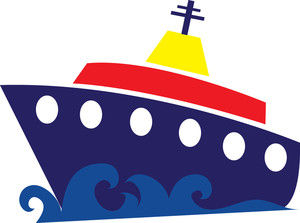June STEM program: Floating Boats
- deborahfagnan
- Jun 1, 2018
- 3 min read
Updated: Nov 1, 2018

Introduction: This Storytime is developed specially for children five to eight years olds. Parents/caregivers are encouraged to attend the program.Enjoy an hour of reading and a STEM activity once a month.
Date: Friday
Time: 3:30 p.m.
Length of Program: 1 hour
Age Range: 5 to 8 years old
Frequently: Monthly
Attendance: 20 children and their parent/caregiver
Staff or Volunteer Needed: 1 staff member, 1 volunteer's
Format: Registration is required.
Room Set-up:
Set up ten tables. Each table with a plastic tablecloth and a tub of water.
Budget: $45.00
Supplies:
Two STEM kits: Boats: $35.00
Float Your Boat Record Sheet (Credit: Lakeshore, 2018) Copy can be found on the Parent/Caregiver Resource pathfinder page.
Aluminum foil
Small plastic tubs (ten) $10.00 (dollar store)
Pennies
Water
Books shared:
(from storytime)
Boats float by George Ella Lyon and Benn Lyon (20 copies from consortium)
Boats, ships, submarines, and other floating machines by Ian Graham (1 copy)
STEM prep:
Order books
Purchase Boats STEAM kits: Boats
Instructions:
Part I
Children come to the story rug. We will talk about today's topic. Do you know kinds of boats? (sailboats, mail boats, motorboats, house boats, model boats, sailboats etc). Let's read a picture book about boats.
After the story, how do all these different kinds of boats float? Some are light, some are heavy? What is buoyancy? What is water displacement?
We will then go over to a large tub of water.
Give each student a Float Your Boat Record Sheet. Copy can be found on the Parent/Caregiver Resource Pathfinder page.
Announce that today they are going to be investigators.
Their job is to discover how many pennies can float in a foil boat before it sinks.
Divide students into pairs and give each pair a large sheet of aluminum foil.
Encourage students to bend and fold the foil any way they like to make a boat. (Explain that their boat can be any shape or size, as long as it is designed to hold pennies and float.)
Instruct students to draw a picture of their boat design on their record sheet.
After they have constructed their boat, prompt students to predict how many pennies their boat will hold without sinking. Have them write that number on their record sheet.
Part II
Give each pair of students a tub of water and a handful of pennies to test their prediction.
Ask students to place their boat on the surface of the water. Then prompt students to take turns adding pennies to the boat until it sinks.
Instruct students to record the number of pennies that the boat held without sinking. Was it more or fewer than they predicted?
Have students find the difference between their prediction and the result by subtracting the smaller number from the larger number.
Part III
Once completed, teams will meet back at the story rug and share their results.
I will share parts of an information that demonstrates buoyancy and water displacement.
Part IV
Children will go back to tables and make their own boat
If time permits they can test the boat out in the water with the help of their parent/caregiver.
Note: Parents/caregivers or volunteers are facilitators and are not allowed to give out answers to questions that they are investigating. They are their to help with team conflicts, and helping to follow directions. They can help children building their boats if they get stuck.
Common Core Standards in English Language Arts Standards: Reading: Literature
Describe the relationship between illustrations and the story in which they appear, such as what moment in a story or illustration depicts.
Use illustrations and details in a story to describe its characters, setting, or events.
Common Core Standards in Science
Develop a simple sketch, drawing, or physical model to illustrate how the shape of an object helps it function as needed to solve a given problem
Children are introduced to inquires regarding the effect weight, size, and shape have on whether an object floats or sinks.
Children explore the effect of shape on buoyancy in depth as they make their own boat out of Aluminum foil as well as making their own boat.
AASL Standards Framework for Learners
Work effectively with others to broaden perspectives and work toward common goals.
Build new knowledge by inquiring, thinking critically, identifying problems, and developing strategies for solving problems.
Objectives:
Children will be introduced to the concepts of buoyancy and water displacement.
Children will be able to follow directors in order to build a boat
Students will demonstrate the basic understanding of the importance of working as a team in order to complete a task on a timely matter.
Children will demonstrate the ability to work collaboratively as they test and record their predictions
References:
American Association of School Librarians (AASL). (2018). AASL Standards Frameworkd= for Learners. Retrieved from https://standards.aasl.org/wp-content/uploads/2017/11/AASL-Standards-Framework-for-Learners-pamphlet.pdf
Lakeshore. (2018). Float Your Boat. Retrieved from https://www.lakeshorelearning.com/resources/free-resources/lesson-plans/floatYourBoat#
Common Core: Mathematics. Retrieved from https://www.state.nj.us/education/cccs/2016/math/ WikiHow. (2018, October 08).




Comments